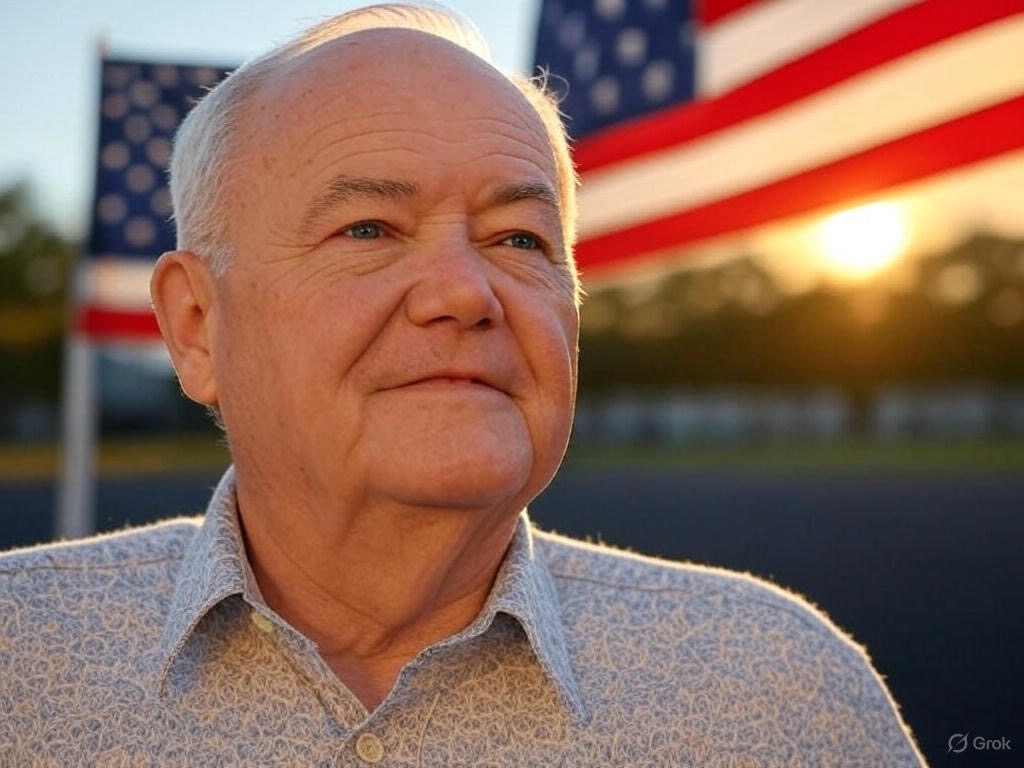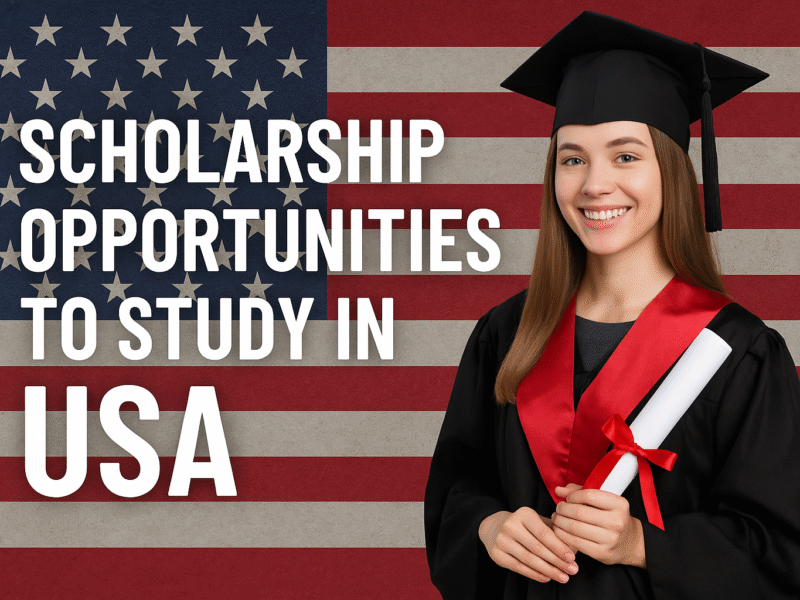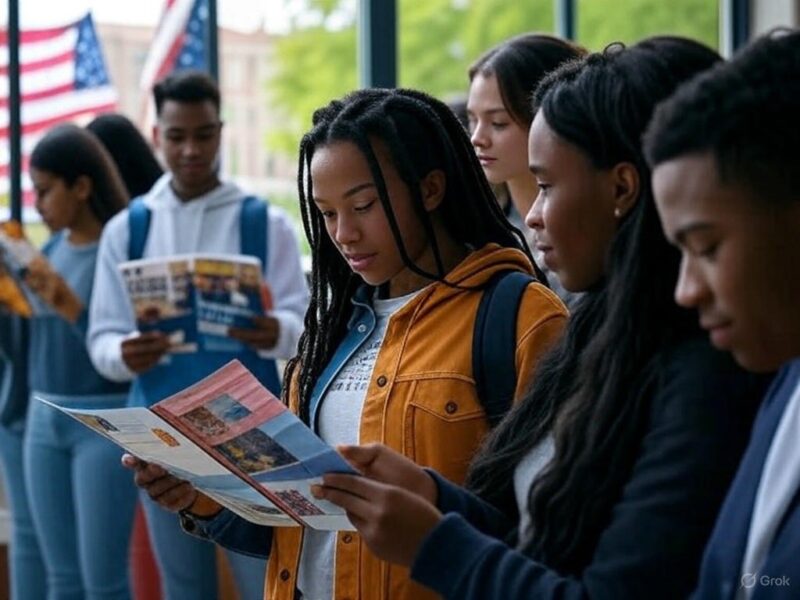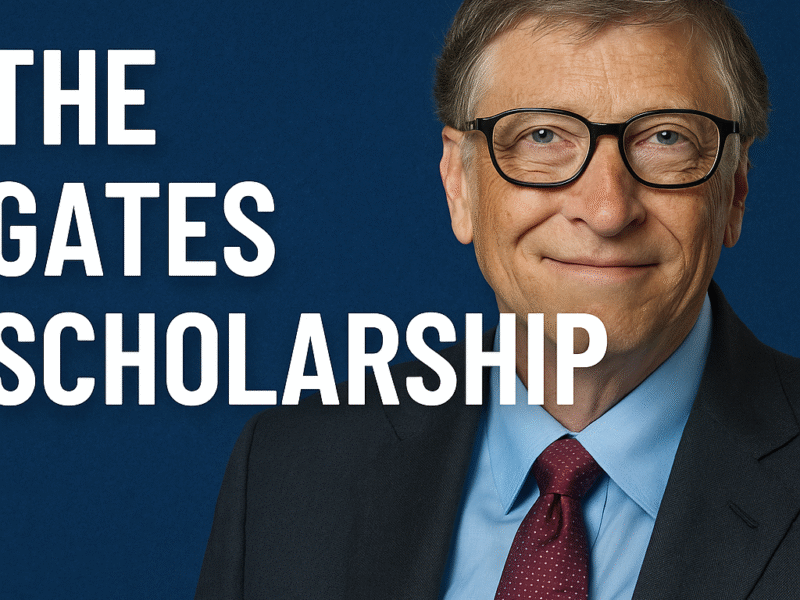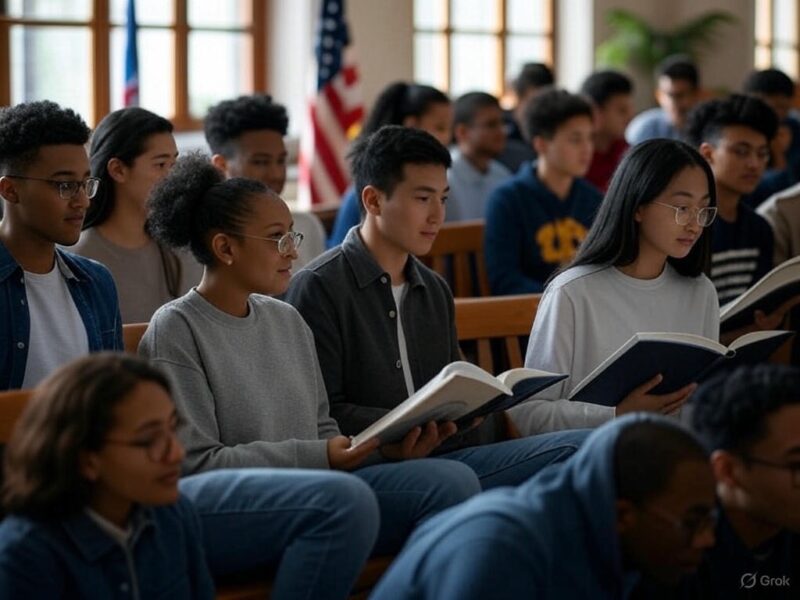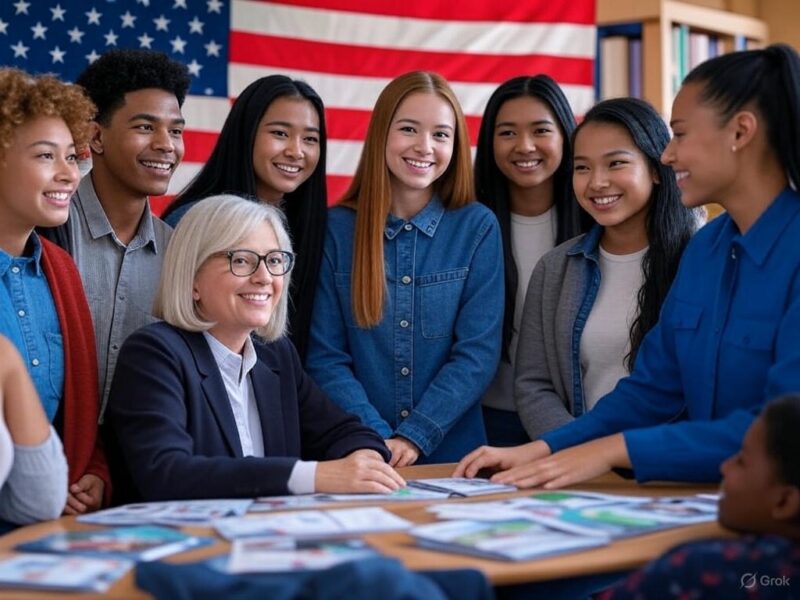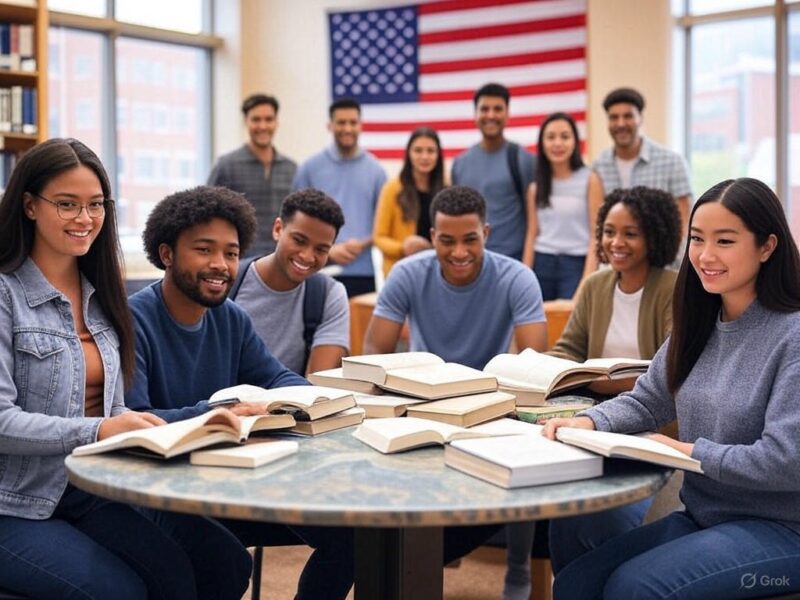The Hubert H. Humphrey Fellowship Program is a fully funded, non-degree scholarship for mid-career professionals from over 140 countries, offering 10 months of professional development in the USA, per humphreyfellowship.org.
Sponsored by the U.S. Department of State and administered by the Institute of International Education (IIE), it enhances leadership and fosters global collaboration, with ~150 awards annually, per exchanges.state.gov.
This guide covers eligibility, application steps, visa processes, and tips for international applicants targeting 2026-2027.
Initiated in 1978 to honor Senator Hubert H. Humphrey, the program has empowered over 6,600 fellows from 163 countries, per publichealthupdate.com. It includes academic study, professional affiliations, and networking at 13 host universities, focusing on fields like public health, human rights, and climate change, per scholars4dev.com.
Fellows return home to drive change, as seen in alumni shaping policies in the Philippines, per humphreyfellowship.org.
Applications are submitted via U.S. Embassies or Fulbright Commissions, with deadlines varying by country (typically May-September 2025 for 2026-2027), per usief.org.in.
High competition demands early preparation and strong nominations. Start now to join a global network of leaders addressing pressing challenges.
Benefits of Schooling in USA
The Humphrey Fellowship offers professional development at top U.S. universities, like American University and UC Davis, known for innovation and diversity, per timeshighereducation.com.
The USA’s academic environment fosters critical thinking, global networking, and practical skills, ideal for mid-career leaders. Full funding ensures focus on growth, not finances, per humphreyfellowship.org.
A U.S.-based fellowship enhances career prospects, with 80% of alumni reporting leadership advancements, per iie.org. Fellows engage in six-week professional affiliations, conferences, and workshops, gaining hands-on experience, per opportunitiesforafricans.com. The J-1 visa supports program participation, though work is restricted, per exchanges.state.gov.
The USA’s multicultural campuses, hosting 1M+ international students, promote cross-cultural collaboration, per educationusa.state.gov. Humphrey’s Global Leadership Forum in Washington, DC, connects fellows with policymakers, per humphreyfellowship.org. Participants return equipped to address local and global issues effectively.
Overview of Humphrey Fellowship
The Humphrey Fellowship provides 10 months of non-degree study and professional enrichment at 13 U.S. host universities, tailored to fields like public policy, environmental policy, and substance abuse prevention, per humphreyfellowship.org. Fully funded, it covers tuition, living expenses, travel, and professional activities, valued at $50,000-$70,000, per scholarshiproar.com. Fellows are assigned to universities based on expertise, not choice, per scholars4dev.com.
The program includes graduate-level courses, a six-week professional affiliation, and leadership workshops, per exchanges.state.gov. Fields of study align with global challenges, such as climate change and human trafficking, per opportunitiesforafricans.com. Fellows must return home post-program to apply skills, per usief.org.in.
- Key fellowship details:
- Duration: 10 months, starting August/September 2026 or April for English training.
- Funding: Tuition, fees, living allowance, travel, insurance, professional activities.
- Fields: Public health, human rights, climate change, education, and more.
- Host Universities: 13, including American University, UC Davis, MIT.
- Deadline: Varies by country, typically May-September 2025.
- Visa: J-1 exchange visitor visa, fully supported.
With over 6,600 alumni, the program fosters lasting U.S.-global ties, per publichealthupdate.com. For example, a Montenegrin fellow developed water tariff policies at the World Bank, per humphreyfellowship.org. Applications require embassy nomination, making early engagement critical.
Eligibility for International Applicants
The Humphrey Fellowship targets mid-career professionals with leadership potential and public service commitment, per humphreyfellowship.org. Applicants need a bachelor’s degree, five years of full-time professional experience, and limited U.S. exposure (less than six months in past five years), per usief.org.in. English proficiency is required, with pre-academic training offered, per exchanges.state.gov.
Eligible fields include public health, law, environmental policy, and urban planning, with priority for underrepresented groups, per scholars4dev.com. Ineligible candidates include recent graduates, U.S.-based professionals, or those with significant U.S. experience, per usefnepal.org. Applicants must reside in their home country at application, per greatyop.com.
- Eligibility requirements:
- Education: Bachelor’s degree or equivalent (four-year or master’s).
- Experience: 5+ years full-time professional work by August 2026.
- U.S. Exposure: Limited (no U.S. study in past 7 years, <6 months in past 5).
- English: Proficiency (TOEFL/IELTS if required), training available.
- Fields: Policy, administration, NGO leadership in designated areas.
- Restrictions: No U.S. citizens, recent graduates, or State Department employees.
Women, minorities, and rural candidates are encouraged, per mg.usembassy.gov. For example, 2024-2025 fellows at American University hail from nine countries, including Cameroon and Pakistan, per american.edu. Contact your U.S. Embassy early to confirm eligibility.
Application Process for 2026-2027
Applying for the Humphrey Fellowship involves submitting an online application through your U.S. Embassy or Fulbright Commission, with deadlines typically May-September 2025, per humphreyfellowship.org. The process requires transcripts, two reference letters (one from your employer), and essays addressing leadership and goals, per usief.org.in. Shortlisted candidates face interviews, with final approval by the J. William Fulbright Board, per exchanges.state.gov.
Applications are submitted via IIE’s portal (apply.iie.org/huberthhumphrey), including certified transcripts and English translations, per mg.usembassy.gov. Embassies nominate candidates after national reviews, with results announced in spring 2026, per scholars4dev.com. English training may start April 2026 for select fellows, per usief.org.in.
- Application steps:
- Contact: Reach U.S. Embassy/Fulbright Commission for country deadlines.
- Apply: Complete online form with essays, transcripts, references.
- Documents: Bachelor’s diploma, transcripts, two letters, English translations.
- Interview: Shortlisted candidates interviewed by embassy/commission.
- Deadline: Varies (May-September 2025), check embassy website.
- Follow-Up: Await nomination, final results in spring 2026.
Start by March 2025 to gather documents and translations, per greatyop.com. Essays should highlight leadership and public service impact, per opportunitiesforafricans.com. Engage embassies early, as nomination is competitive, per usefnepal.org.
Visa Sponsorship for Fellows
The Humphrey Fellowship provides J-1 exchange visitor visa sponsorship, essential for program participation, per exchanges.state.gov. Host universities or IIE issue Form DS-2019 post-selection, covering the 10-month program, per humphreyfellowship.org. The fellowship covers visa fees ($185) and SEVIS fees ($220), per uscis.gov.
J-1 visas prohibit employment but allow full-time study and professional affiliations, per internationalstudent.com. Fellows must return home for two years post-program to meet J-1 requirements, proving home country ties during interviews, per educationusa.state.gov. Visa processing (1-3 months) requires early applications after selection (spring 2026), per kg.usembassy.gov.
- Visa sponsorship essentials:
- Visa Type: J-1 exchange visitor, 10 months, no employment.
- Documents: DS-2019, passport, fellowship acceptance, financial proof.
- Fees: Visa ($185), SEVIS ($220), covered by fellowship.
- Interview: Prove home country ties, program goals, funding.
- Processing: 1-3 months, apply post-selection (spring 2026).
- Support: IIE, host universities, embassies guide visa processes.
EducationUSA and U.S. Embassies assist with interviews, per educationusa.state.gov. For example, Nepal’s Fulbright Commission supports visa documentation, per usefnepal.org. Apply early to avoid delays for August 2026 or April 2026 starts.
Benefits of the Fellowship
The Humphrey Fellowship fully funds 10 months, covering tuition, living allowances, travel, insurance, and professional activities, valued at $50,000-$70,000, per scholarshiproar.com. Fellows access graduate-level courses, six-week professional affiliations, and leadership forums, enhancing skills in fields like public health and human rights, per humphreyfellowship.org. Alumni networks connect 6,600+ leaders, per publichealthupdate.com.
Professional affiliations, like a Nepali fellow’s work on human trafficking, provide real-world impact, per humphreyfellowship.org. The Global Leadership Forum and community college experiences broaden perspectives, per opportunitiesforafricans.com. 80% of fellows report career advancements, per iie.org.
- Fellowship benefits:
- Financial: Tuition, living allowance, travel, insurance, activities.
- Academic: Graduate-level courses, tailored professional development.
- Professional: Six-week affiliations, conferences, networking.
- Leadership: Global Leadership Forum, workshops, alumni network.
- Cultural: Community engagement, U.S. cultural immersion.
- Career: 80% of alumni report leadership advancements.
Fellows at UC Davis, for instance, collaborate on sustainability projects, per globalaffairs.ucdavis.edu. The program’s prestige and networks open doors to policy roles, per scholars4dev.com. Participants return home to drive change, leveraging U.S. connections.
How to Find Fellowship Information
Finding Humphrey Fellowship details requires official and external resources. The program website (humphreyfellowship.org) provides eligibility, fields, and host university details, per humphreyfellowship.org. U.S. Embassies and Fulbright Commissions (e.g., usief.org.in, usefnepal.org) offer country-specific deadlines and applications, per exchanges.state.gov. EducationUSA centers provide free advising, per educationusa.state.gov.
Platforms like scholars4dev.com, greatyop.com, and opportunitiesforafricans.com detail benefits and tips, updated for 2026-2027, per scholars4dev.com. Following @HumphreyProgram on X or LinkedIn shares updates, per ye.usembassy.gov. Embassy webinars, like Madagascar’s, offer insights, per mg.usembassy.gov.
- Resources for information:
- Official: humphreyfellowship.org for guidelines, host universities.
- Embassies: U.S. Embassy/Fulbright Commission for deadlines, forms.
- EducationUSA: Free advising at embassies for applications, visas.
- Scholarship Sites: scholars4dev.com, greatyop.com, opportunitiesforafricans.com.
- Social Media: @HumphreyProgram on X, LinkedIn for alerts.
- Webinars: Embassy sessions, e.g., Madagascar (+261 33 44 325 52).
Verify details via humphreyfellowship.org to avoid scams, per internationalstudent.com. Research 12-18 months before deadlines (May-September 2025), per greatyop.com. Contact embassies early to confirm nomination processes.
Application Tips for Success
A competitive Humphrey application showcases leadership, public service, and clear goals, per humphreyfellowship.org. Essays (500-700 words) should detail professional impact, U.S. study plans, and home country contributions, per usief.org.in. Secure two reference letters, including one from your employer, highlighting your leadership, per mg.usembassy.gov.
Start by March 2025 to gather transcripts, translations, and references, per scholars4dev.com. Ensure English proficiency (TOEFL/IELTS if required) and contact your embassy for specific rules, per exchanges.state.gov. Avoid generic essays, focusing on unique contributions, per opportunitiesforafricans.com.
- Application best practices:
- Essays: 500-700 words, highlight leadership, U.S. plans, impact.
- References: Two letters, one from employer, in English.
- Documents: Certified transcripts, bachelor’s diploma, translations.
- Timeline: Start March 2025, submit by country deadline (May-September).
- English: Prepare TOEFL/IELTS if needed, training offered.
- Review: Seek embassy feedback, avoid plagiarism.
Tailor applications to your field, like substance abuse for NIDA co-funded fellowships, per usief.org.in. For example, a Yemeni applicant applied by August 10, 2024, for 2025-2026, per ye.usembassy.gov. Early embassy engagement ensures a strong nomination.
Cost of Studying with Humphrey
Without the fellowship, a U.S. academic year costs $20,000-$50,000 for tuition, plus $10,000-$20,000 for living expenses, per topuniversities.com. Additional costs include insurance ($1,500-$2,500), books ($1,000), and visa/SEVIS fees ($405), per Numbeo. The Humphrey Fellowship covers all these, ensuring no out-of-pocket costs, per humphreyfellowship.org.
Fellows receive a living allowance, varying by city, and a professional development stipend, per kg.usembassy.gov. J-1 visas prohibit work, so reliance on funding is key, per internationalstudent.com. Personal expenses (~$1,000) may require budgeting, per scholarshiproar.com.
- Key expenses (covered):
- Tuition: $20,000-$50,000, fully funded by fellowship.
- Living Costs: $10,000-$20,000, allowance provided.
- Insurance: $1,500-$2,500, mandatory, covered.
- Visa/SEVIS: $185/$220, paid by program.
- Travel: International, domestic for program events, funded.
- Extras: Books ($1,000), professional activities, stipend provided.
The fellowship’s funding allows focus on professional growth, per exchanges.state.gov. Confirm coverage with IIE or your embassy, per iie.org. Budgeting for personal costs ensures a smooth experience.
Networking for Fellowship Success
Networking with embassy staff, Humphrey alumni, and host university faculty strengthens applications, per humphreyfellowship.org. Attending embassy webinars, like Yemen’s, or contacting Fulbright Commissions provides guidance, per ye.usembassy.gov. Connecting with alumni via LinkedIn or @HumphreyProgram on X offers insights, per opportunitiesforafricans.com.
Joining forums like Reddit’s r/scholarships or embassy Facebook groups shares peer advice, per scholars4dev.com. Following up with contacts post-webinar shows commitment, per leverageedu.com. For example, a Filipino alumnus built a trafficking rehabilitation center, per humphreyfellowship.org.
- Networking strategies:
- Attend: Embassy webinars, Fulbright Commission sessions.
- Connect: Alumni on LinkedIn, @HumphreyProgram for tips.
- Engage: Reddit’s r/scholarships, embassy social media.
- Contact: Embassy staff or IIE ([email protected]) for clarifications.
- Follow-Up: Email contacts within 1-2 weeks post-interaction.
- Join: Global Leadership Forum networks post-selection.
Building a network by March 2025 enhances applications, per greatyop.com. Alumni like UC Davis’s Sushila Thing (Nepal) share project insights, per globalaffairs.ucdavis.edu. Persistent engagement boosts nomination chances.
Challenges for Applicants
The Humphrey Fellowship is highly competitive, with thousands applying for ~150 spots, per humphreyfellowship.org. J-1 visa delays (1-3 months) can disrupt enrollment, requiring early applications, per uscis.gov. English proficiency tests (TOEFL/IELTS) challenge some, though training is offered, per usief.org.in.
Securing embassy nomination and strong references is complex, especially in remote areas, per mg.usembassy.gov. Scholarship scams, promising “guaranteed” selection, target applicants, per internationalstudent.com. The two-year home residency rule post-program limits flexibility, per kg.usembassy.gov.
- Common challenges:
- Competition: Thousands apply for ~150 fellowships annually.
- Visa Delays: 1-3 months for J-1, early action needed.
- Language: TOEFL/IELTS for some, training available.
- Nomination: Embassy review, references time-consuming.
- Scams: Verify via humphreyfellowship.org, avoid unofficial sites.
- Residency: Two-year home return mandatory post-program.
Using official sites, preparing for tests via Duolingo, and contacting EducationUSA mitigate risks, per scholarshipamerica.org. Starting early (March 2025) and engaging embassies increase success, per scholars4dev.com. Resilience overcomes these hurdles.
Conclusion
The Hubert H. Humphrey Fellowship for 2026-2027 offers a fully funded 10-month journey in the USA, covering tuition, living costs, and J-1 visa support, per humphreyfellowship.org. By meeting eligibility, crafting strong applications, and leveraging embassy networks, you can enhance leadership and address global challenges. Apply by your country’s deadline (May-September 2025) to join 6,600+ alumni.
Visit humphreyfellowship.org, contact your U.S. Embassy, and connect with EducationUSA now, per exchanges.state.gov. With dedication, you’ll drive change in your community and beyond. Share your Humphrey journey in the comments or reach out for tips!
Sources: humphreyfellowship.org, exchanges.state.gov, usief.org.in, scholars4dev.com, scholarshiproar.com, greatyop.com, opportunitiesforafricans.com, publichealthupdate.com, iie.org, mg.usembassy.gov, ye.usembassy.gov, kg.usembassy.gov, usefnepal.org, globalaffairs.ucdavis.edu, american.edu, educationusa.state.gov, uscis.gov, topuniversities.com, Numbeo, internationalstudent.com, scholarshipamerica.org @HumphreyProgram
